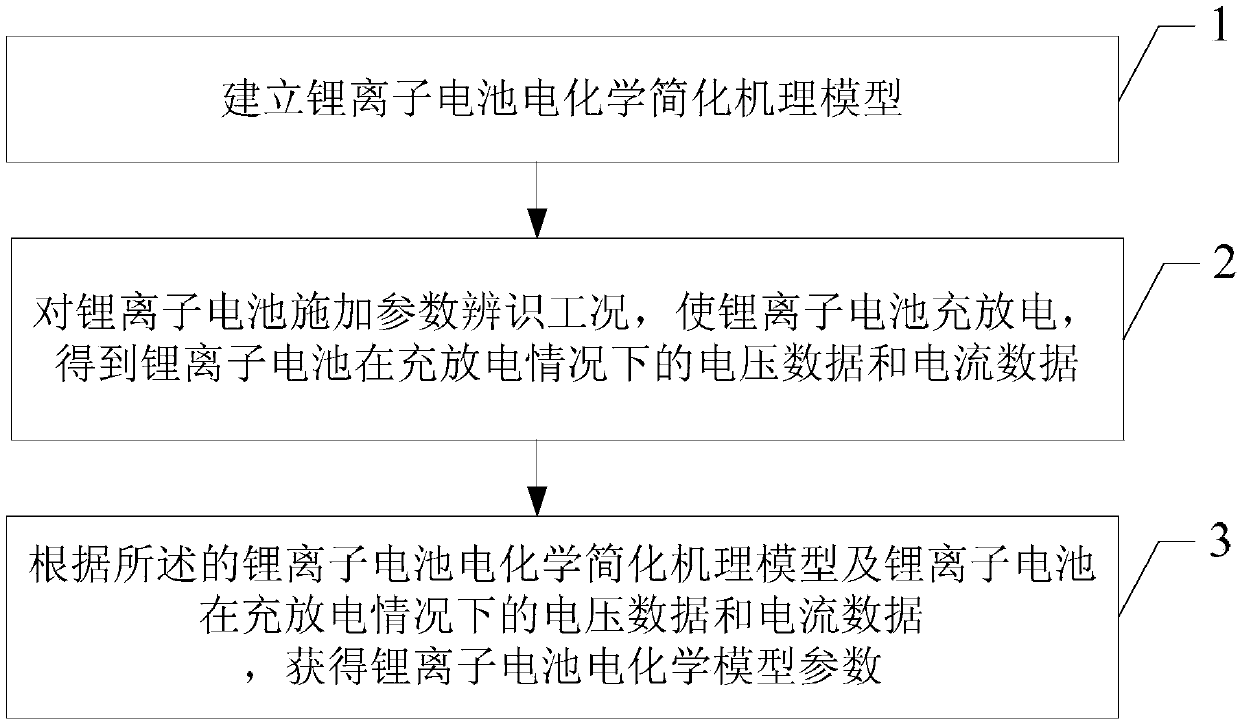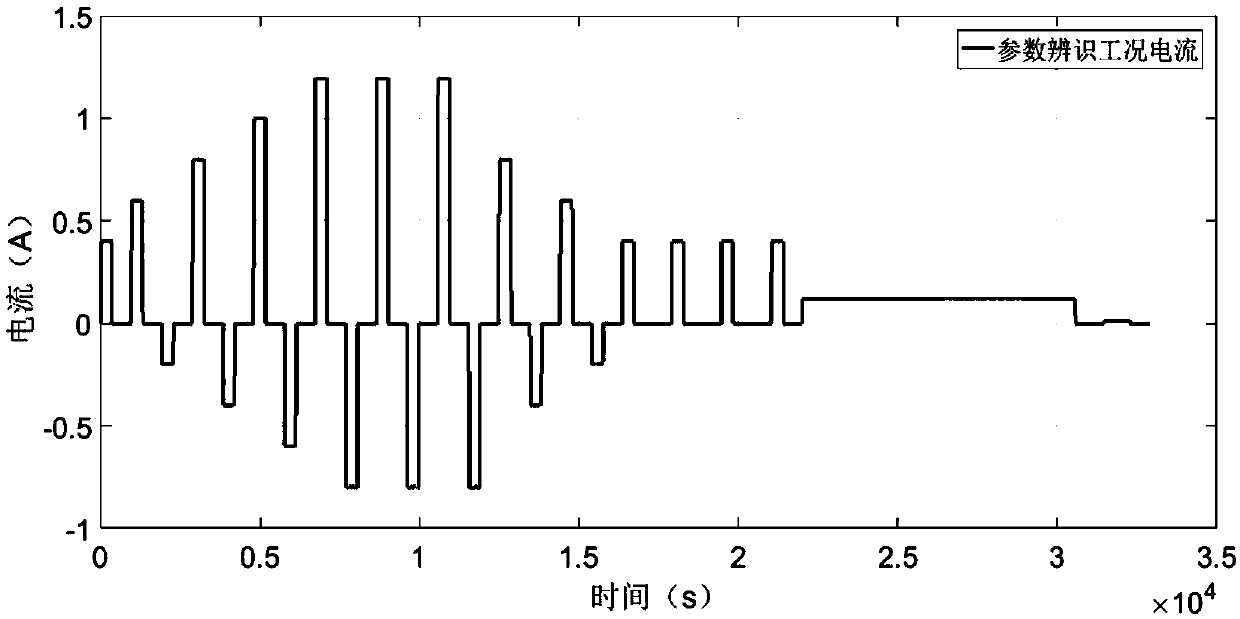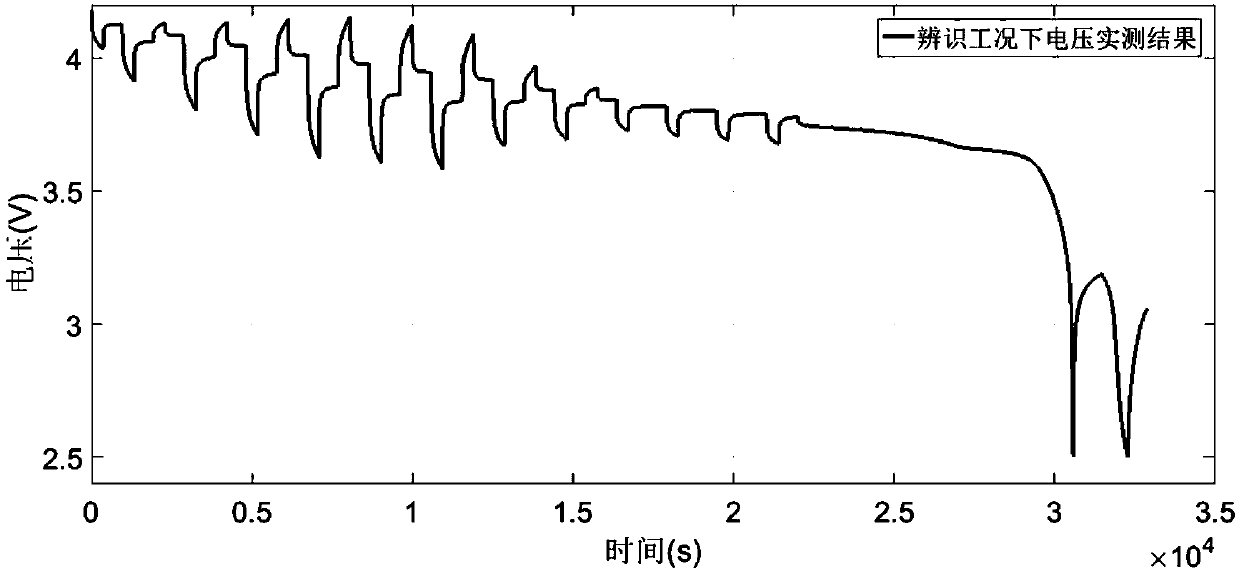Method for obtaining electrochemical model parameters of lithium ion battery
A lithium-ion battery and model parameter technology, applied in the field of new energy research, can solve the problem of not having fast and non-destructive acquisition of parameters, and achieve good simulation estimation capabilities, improve acquisition efficiency, and efficient parameter acquisition
- Summary
- Abstract
- Description
- Claims
- Application Information
AI Technical Summary
Problems solved by technology
Method used
Image
Examples
specific Embodiment approach 1
[0021] Specific implementation mode one: refer to figure 1 Specifically illustrate this embodiment, a method for obtaining electrochemical model parameters of a lithium-ion battery described in this embodiment, the method includes the following steps:
[0022] Step 1. Establish a simplified electrochemical mechanism model of lithium-ion batteries;
[0023] Step 2, apply parameter identification working conditions to the lithium-ion battery, charge and discharge the lithium-ion battery, and obtain voltage data and current data of the lithium-ion battery under charging and discharging conditions;
[0024] Step 3: Obtain the electrochemical model parameters of the lithium ion battery according to the simplified electrochemical mechanism model of the lithium ion battery and the voltage data and current data of the lithium ion battery under charging and discharging conditions.
[0025] In this embodiment, the parameter identification condition is applied to the lithium-ion batter...
specific Embodiment approach 2
[0026] Specific embodiment 2: This embodiment is a further description of the acquisition method of a lithium-ion battery electrochemical model parameter described in specific embodiment 1. In this embodiment, the simplified mechanism model of lithium-ion battery electrochemical includes the open circuit voltage E ocv (t), positive electrode active particle surface lithium intercalation concentration fraction y surf (t), the lithium intercalation concentration fraction on the surface of the negative electrode active particle x surf (t), concentration polarization overpotential η con (t), reaction polarization overpotential η act (t), ohmic polarization overpotential η ohm (t) and / or terminal voltage U app (t).
specific Embodiment approach 3
[0027] Specific implementation mode three: refer to figure 2 with Figure 4 Describe this embodiment in detail. This embodiment is a further description of the method for obtaining the electrochemical model parameters of a lithium-ion battery described in Embodiment 2. In this embodiment, it is assumed that the internal temperature and surface temperature of the battery are constant, and the open circuit Voltage E ocv The formula for (t) is:
[0028] E. ocv (t)=U p [y surf (t)]-U n [x surf (t)] Formula 1,
[0029] In the formula, U p and U n is the positive and negative open circuit potential curve, x surf (t) is the lithium intercalation concentration fraction on the surface of the negative electrode active particles, x surf (t) is expressed as: x surf (t)=x avg (t)-Δx(t) Formula 2, y surf (t) is the lithium intercalation concentration fraction on the surface of positive active particles, y surf (t) is expressed as: y surf (t)=y avg (t)+Δy(t) formula 3, the i...
PUM
 Login to View More
Login to View More Abstract
Description
Claims
Application Information
 Login to View More
Login to View More - R&D
- Intellectual Property
- Life Sciences
- Materials
- Tech Scout
- Unparalleled Data Quality
- Higher Quality Content
- 60% Fewer Hallucinations
Browse by: Latest US Patents, China's latest patents, Technical Efficacy Thesaurus, Application Domain, Technology Topic, Popular Technical Reports.
© 2025 PatSnap. All rights reserved.Legal|Privacy policy|Modern Slavery Act Transparency Statement|Sitemap|About US| Contact US: help@patsnap.com



